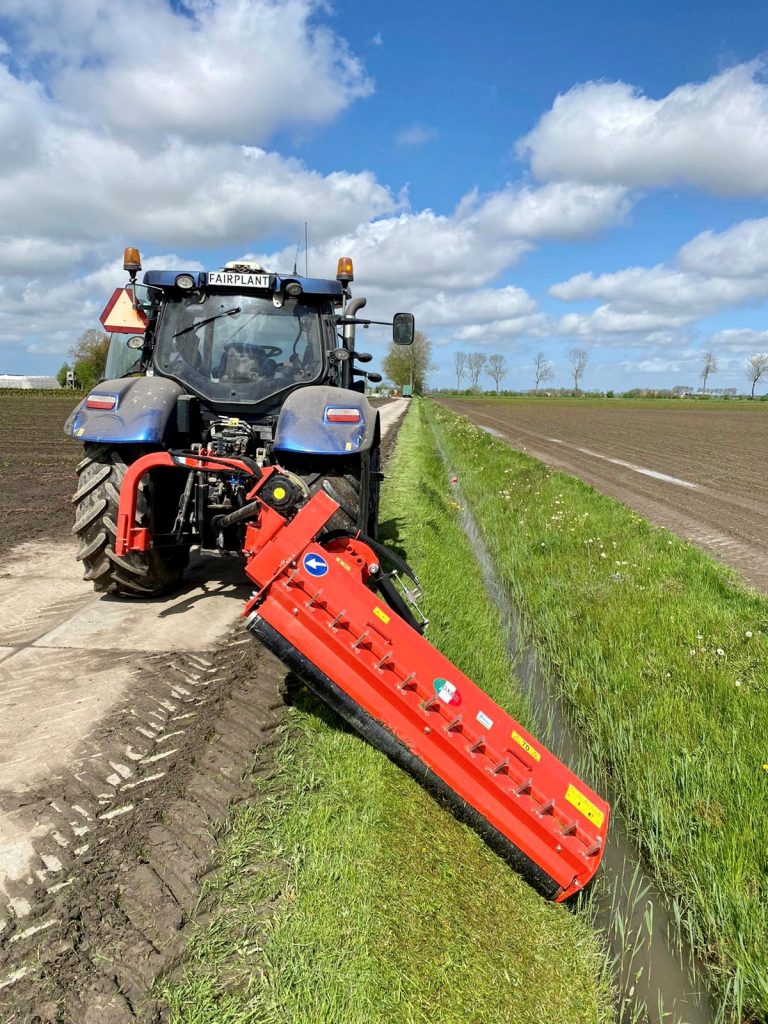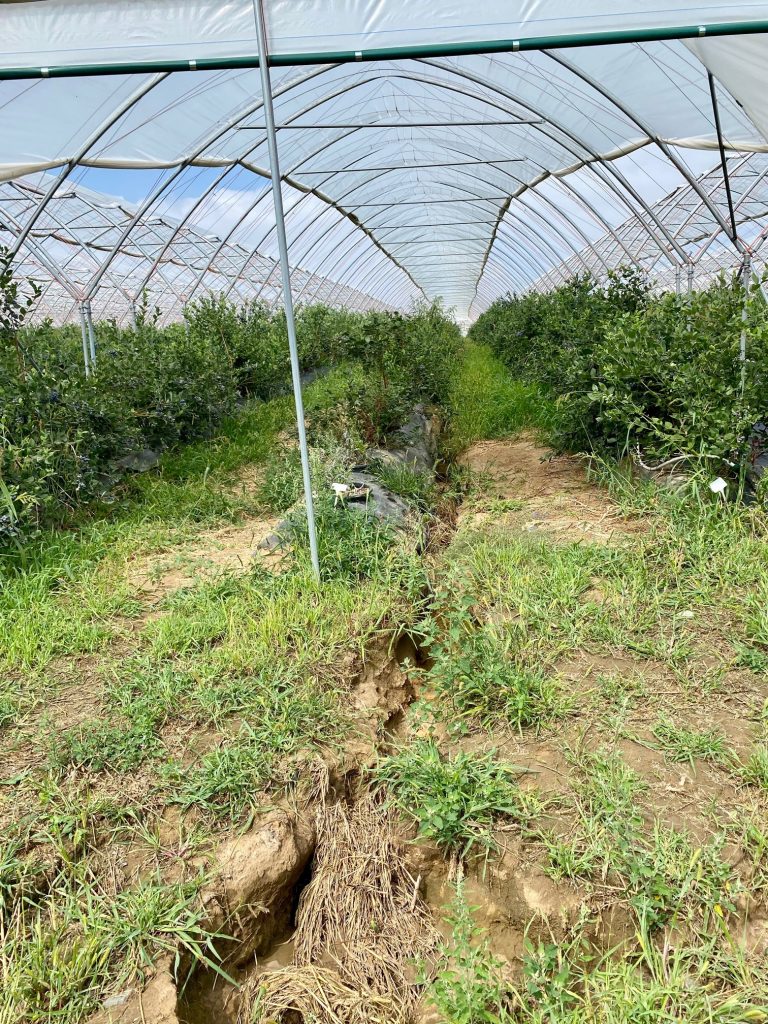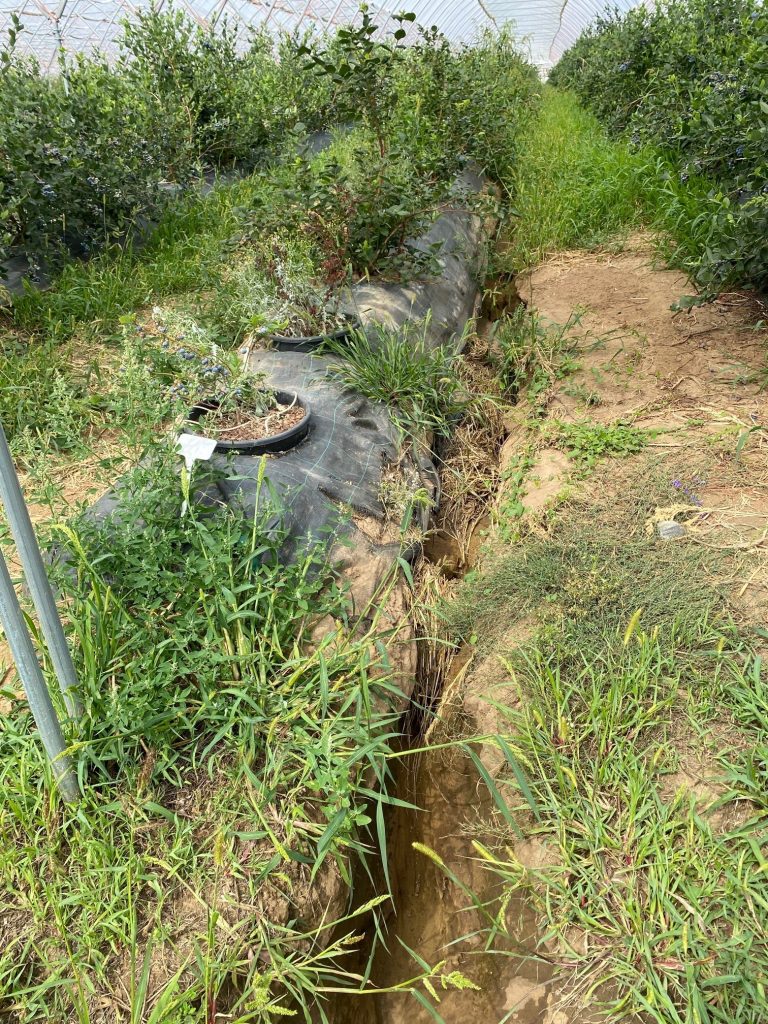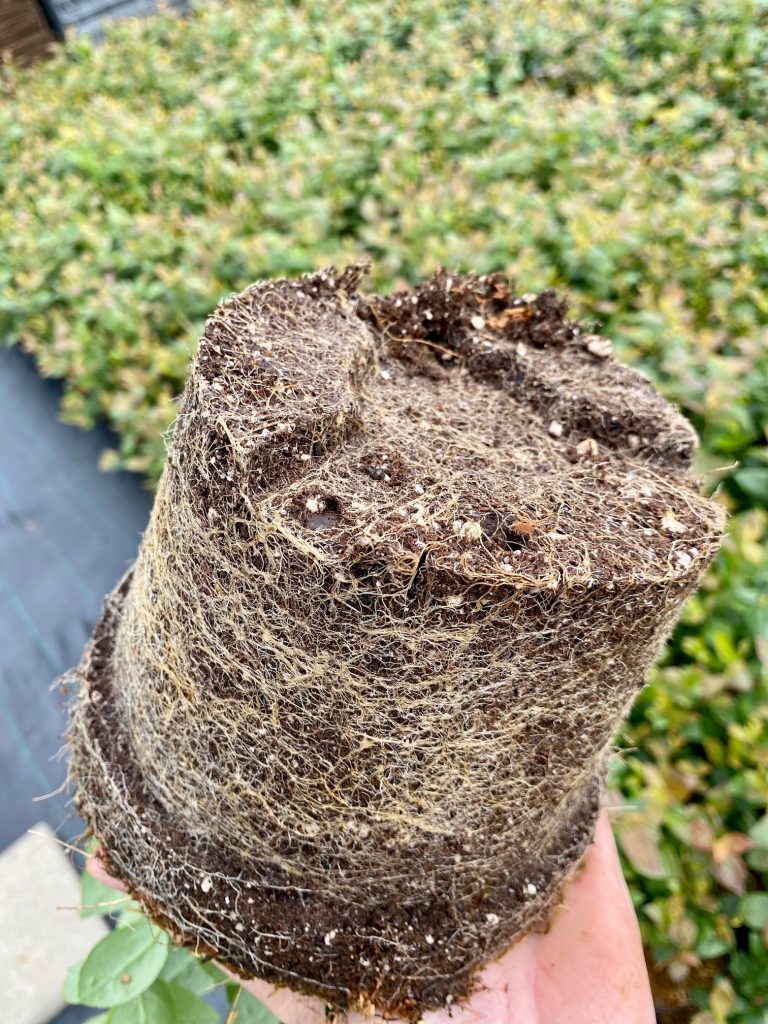Water. One of the most important ‘items’ that is characterizing the planet earth. Around 71% of the surface of our planet earth is liquid water.
We as humans, animals, several organism and also plants need it. Without a single drop of water nothing will survive or even grow. On the other hand water can be also a huge threat. Due to climate changes, we nowadays see ice caps melting, floods, heavy rainfalls resulting in mudslides. There is more and more a lack of good sweet water.
For us as agronomists, in particular tree nurserymen and blueberry growers, it’s all about the ‘balance’. We do need H2O on the right spot and on the right time. We also want to get rid of the excessive water if there is. Also on the right spot and in the right timeframe.

I will give you some insights how we manage the water in our open field nursery and on our blueberry fields. What principles do we take and what do we do to manage it?
The biggest part of our operation is in the open field or directly in the soil of mother earth. Here we grow a.o. fruit tree rootstocks in 1 or 2 seasons and fruit trees. We are very privileged to work on the best virgin ground of whole Europe, or maybe the whole world. Our area the Noordoostpolder – Flevoland is a so called ‘polder’. Land that is recovered from the sea in the 1940’s. In our previous blog you can read more about it. This privilege gives us several advantages in relation to water management.
We are basically growing plants in an artificially made ‘bathtub’ on a very big scale. In this ‘bathtub’ of the Noordoospolder the so called ‘Waterschappen’ (official water authorities of the Netherlands) are controlling a.o. the water levels. They can, when needed, pump sweet water in and out our area by using the open waterways of the Netherlands (canals, rivers, lakes, etc.). ery agricultural field in our polder is surrounded by minimum 1 canal. This canal system are for us as nurserymen of vital importance. So every nursery field has access to water for irrigation and the excess of water can always be pumped out.
Another advantage of the so called polder i.r.t. water management is the situation of our plots. If you ever visited our region you remember all our field are as flat as a pancake.
Before planting a nursery or a fruit-orchard we can level and plain the field on a very cost-efficient method in such a way that the water always will drain/flow back to the nearest canal. Also by using drainage hoses, which we put in the ground before planting, we manage the water. These drainage hoses are mainly for draining the excessive water out of the ground to the nearest canal after a heavy rainfall or long period of rain. But we can also use these drainage pipes contra-wise. If there is a lack of rainfall we let the Water Authorities pump an abundance of water in the canal which is overflooding the drainage pipes.
This is call ‘under drainage’ where the ground now will absorb the water from the pipes and bring it to the root of the plants. Therefore we are taking care for the canals by keeping them clean and open by a.o. mowing the grass and dredging the canals several times a year. See picture 1.

Also we are servicing the drainage pipes once a while by flushing them completely so they do not get blocked and silt up.
A relative new working method we use in our rootstock nursery in the open field is bringing back as much as possible ‘soil-life’ back in the ground. We do this by bringing in organic matter in the soil, and using less of the conventional fertilizers as they do in the normal agriculture. Resulting in the fact that we see and experience that a good soil-life is giving a healthier plant with a lot of reserves, but also helping with managing the water.
The organic matter in the ground is good for absorbing and releasing the water and all the soil-critters. (like a simple harmless rainworm). Their corridor systems are helping us with draining after a rainfall. So all the small things of mother nature will help! For blueberry plants (fruit orchard) in the open field make sure you have a good water drainage under the root system of the plants. For example make a V-shaped trench a fill this with gravel, sand and the substrate. Plant the plants on a ridge so they are standing higher than the actual ground level. Make sure there is a good water-permeable layer which not silts up during the years. Also when planting the orchard think and try to understand how the water will flow when you have extreme rainfalls.
In the pictures below you can see that during heavy rainfall the plant rows are completely eroded by the water, resulting in dead plants, disturbed ground surface, less comfort during cultivation activities and the chance it will happen again.


Sometimes it’s better to plant a bit less efficient and taking in account the waterflow.
We grow our blueberry plants in pots with a special substrate for our demo field. In relation to water management the pot, substrate and the field and/or underground are crucial items. A blueberry plant loves H2O but does not like a wet root system.
Make sure your field, where the pot is standing, is correctly leveled and drained. Put the pots on a special canvas so the plants are standing firm and all homogenous even. For the pots/containers it is important to have good drainage holes, so the excess of water can be drained out of the pot very fast and easily. We recommend a pot that is standing on some stands or platform: so the bottom of the pot is not standing in a puddle of water.
In our demo field we placed the berry plants in 25 liter pots on a ridge covered with canvas. For our young plant nursery we use a special nursery pot with drainage holes and ribbing so the bottom of the plants is always dry. This gives a beautiful strong and healthy root system during the growing season of the young plants. See picture 3.

There is a lot of ‘special’ substrates available on the market nowadays. Each substrate has it own ingredients and characteristics. Always make sure that the substrate can store water for dryer periods and that it can easily can let water through if there is a big rain shower. For example did you know that coco-fibers are good water managers in the substrate? The can load themselves with water during a rain fall and also can release it very easily when the plants need it. So the coco-fibers functions as natural buffers in the pot.
If you have any questions and or remarks about this blog and your cultivation do not hesitate to contact us!
